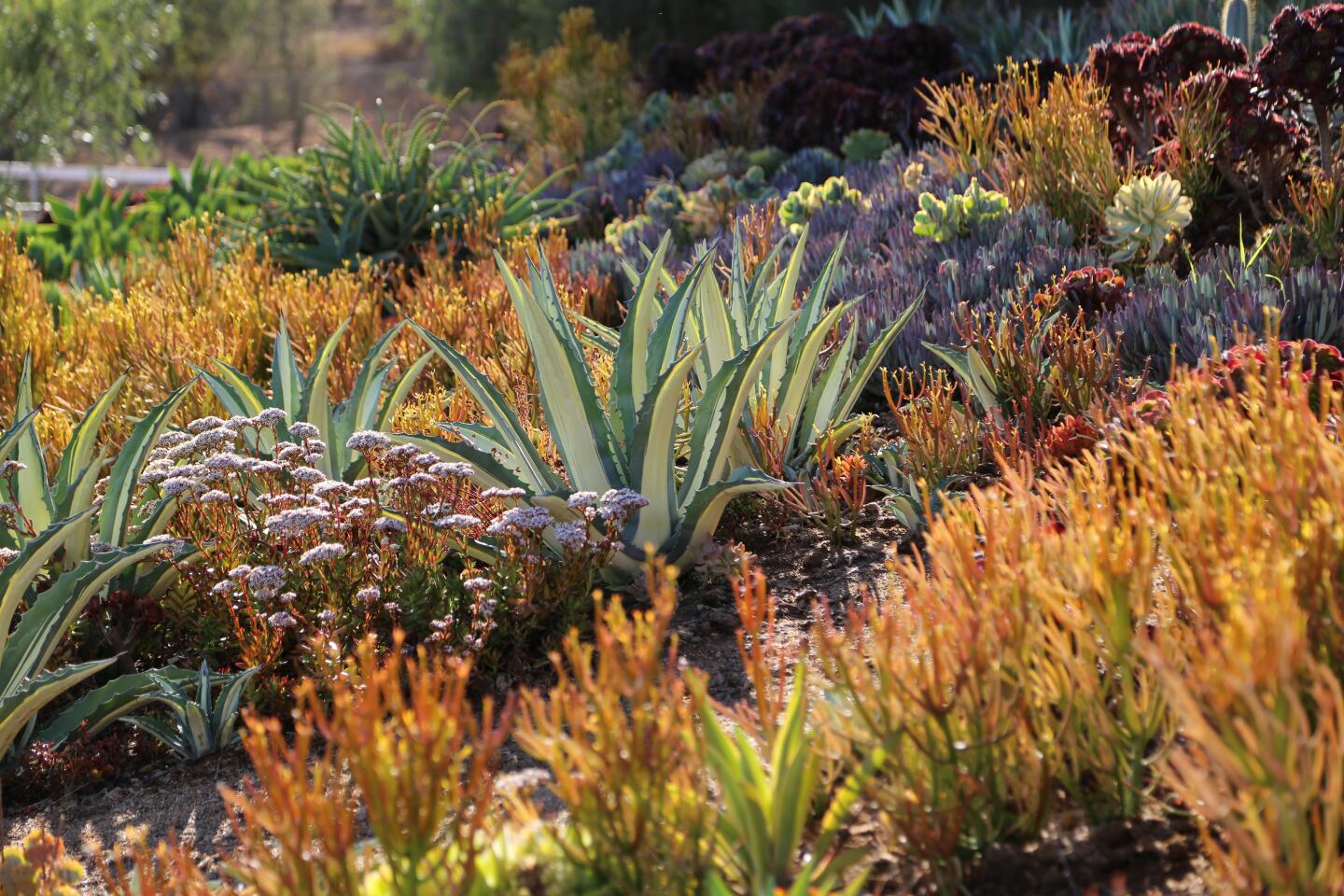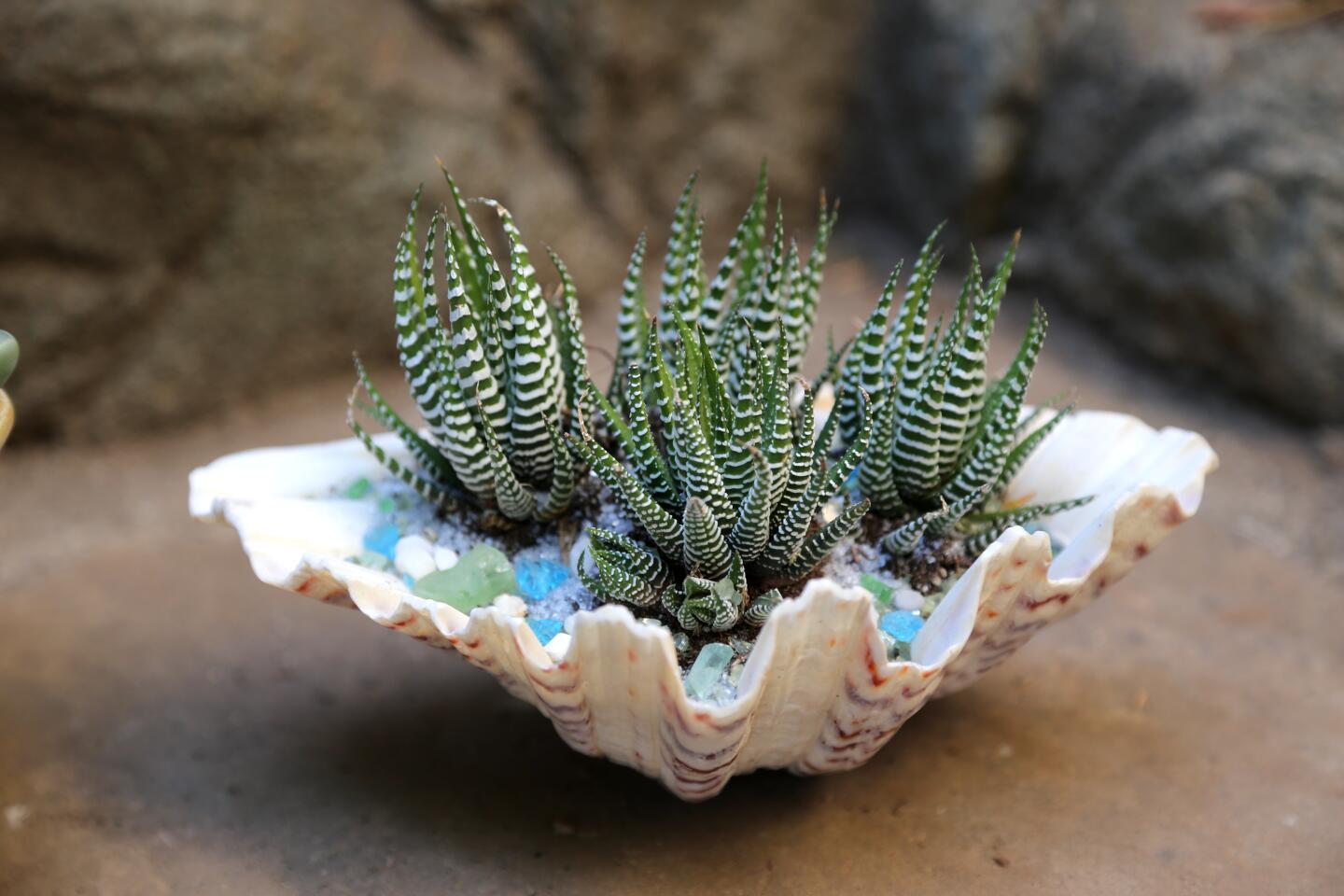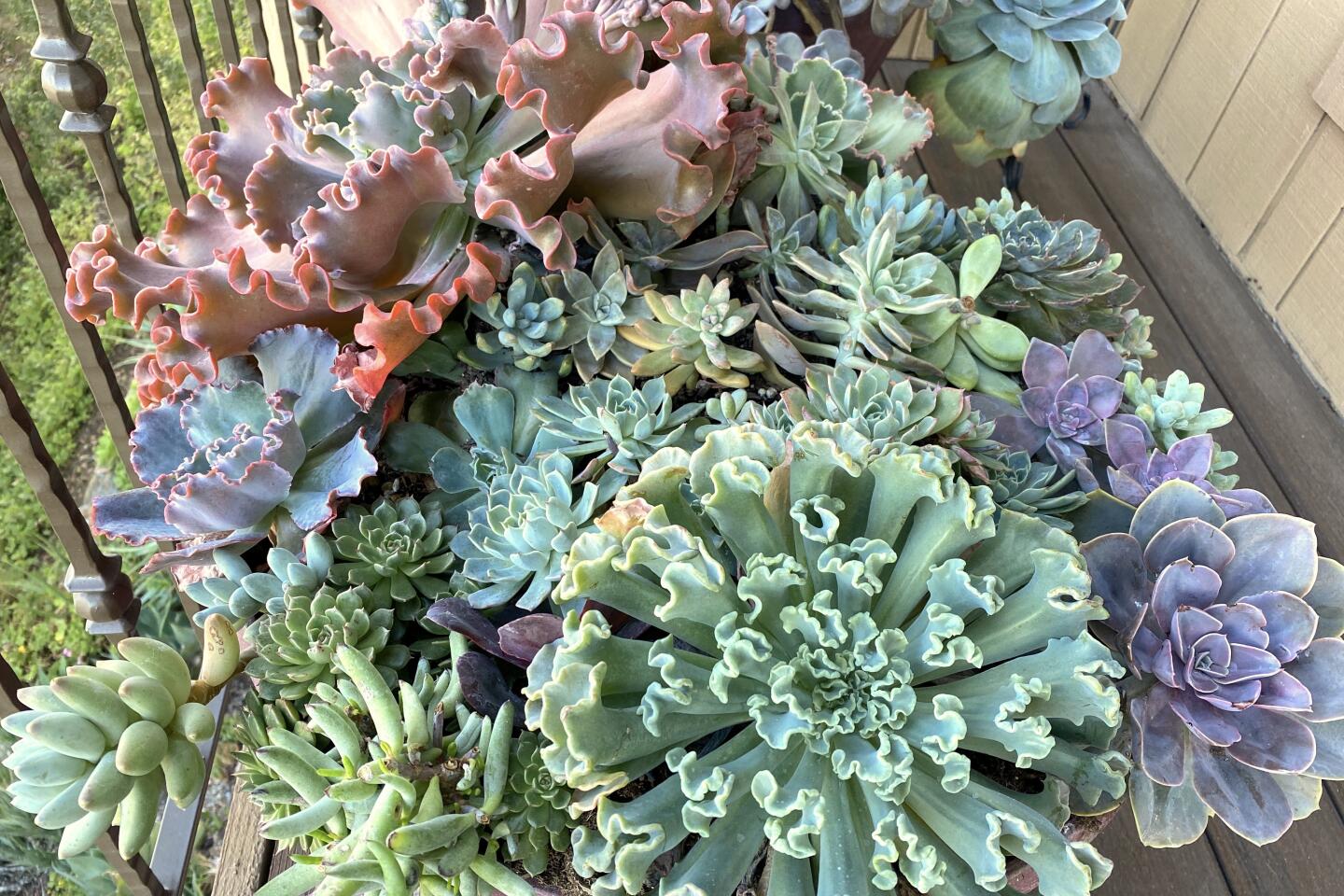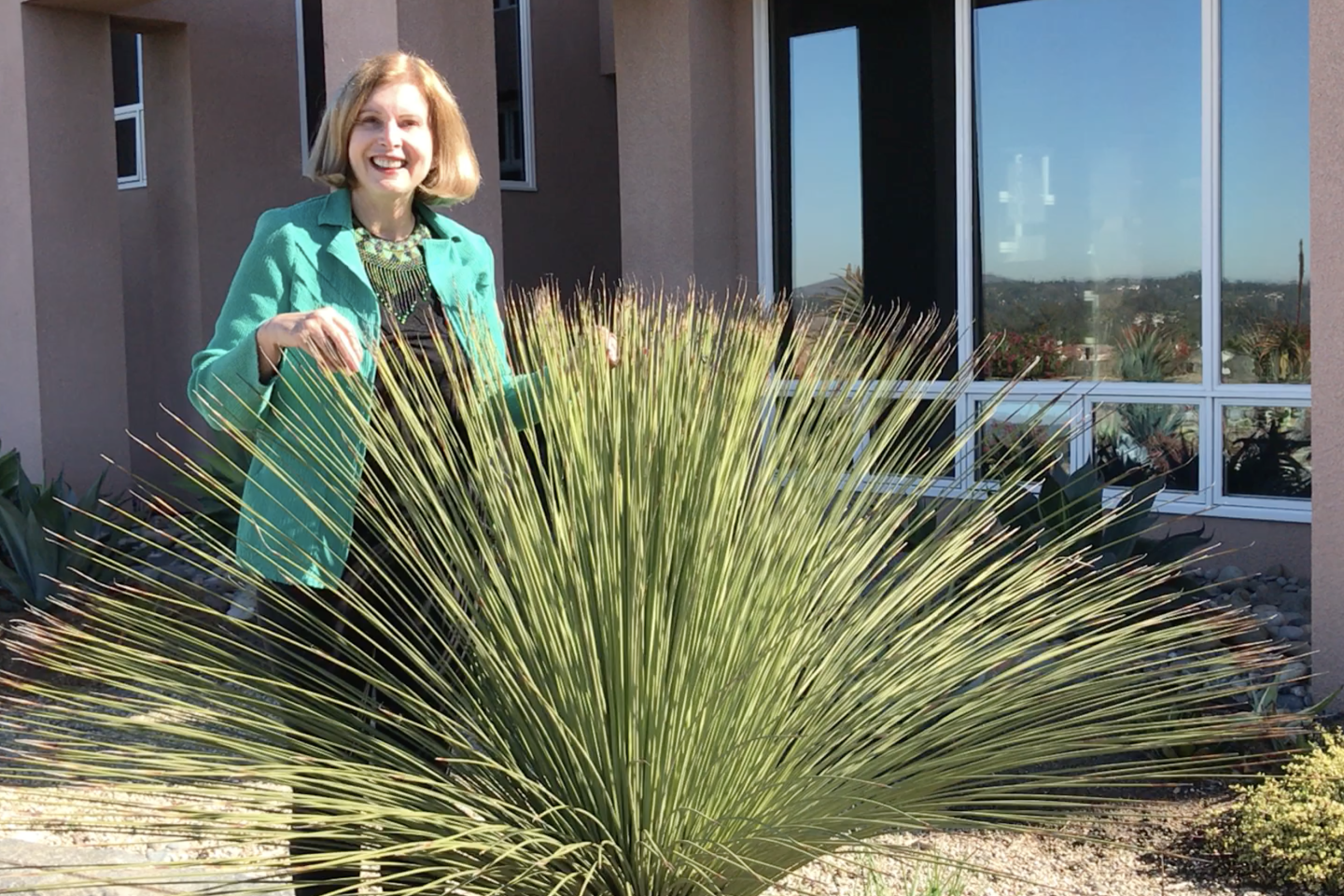Succulent gardens: Tips for designing with drought-tolerant plants
As a decades-long drought persists in Southern California and pressure grows to conserve scarce water resources, more and more people are ridding their gardens of thirsty lawns and water-intensive plants. Instead, they’re turning to succulents and other drought-tolerant species to add beauty, color and texture to their landscapes.
Prominent garden author, photojournalist and horticulturist Debra Lee Baldwin has nurtured the growing interest in succulents by writing three books about these varied, vibrant plants: “Designing with Succulents,” “Succulent Container Gardens” and “Succulents Simplified.” In her books and on her website, debraleebaldwin.com, she provides tips on gardening and designing with succulents, many of which originated in Mediterranean climates similar to San Diego’s.
Succulents are plants that store moisture in fleshy leaves or stems to survive periods of drought. Cactuses, aloe and jade are some of the best-known succulents.
Baldwin lives in a home on a slope northeast of Escondido that she has landscaped primarily with succulents. She first discovered their benefits while living in Ocean Beach and freelancing for publications including the now-defunct San Diego Home/Garden Lifestyles. Her fascination grew when she became a garden scout for Sunset Magazine and began focusing more on dry-climate gardening.
“I was enthralled by the gardens and designers who’d moved beyond the English country garden,” Baldwin explained. “The story then was the people who transformed their English country gardens with plants that would grow in San Diego.”
Among the plants that first dazzled her were the many varieties of aloes, agaves and barrel cactus. Now, she recommends as her top seven choices for low-maintenance succulents Aeonium haworthii, Echeveria ‘Sahara,’ Crassula ovata ‘Hummel’s Sunset’ (sunset jade), Beaucarnea recurvata (bottle palm), Agave ‘Blue Glow,’ Aloe brevifolia and Kalanchoe luciae (paddle plant).
“Barrel cactus is the landscape designer’s secret weapon” because of its ability to transform light into a golden translucent glow, she said. “Plant three or more in odd numbers in clusters or in repetition throughout your garden. You will give your succulent garden a much more sophisticated look, because of its backlit effect, golden color, texture and repetition.”
When Baldwin wrote the first edition of “Designing with Succulents” in 2007, jade was the predominant ornamental succulent on the gardening scene. By the time her fully revised second edition appeared 10 years later, the availability and popularity of a wide variety of succulents had exploded, she said.
Soil, light, spacing and water are key considerations when choosing succulents for a drought-resistant garden, according to Baldwin. They are happiest in a well-draining soil, so if your soil doesn’t drain well, you may need to improve or amend it. Baldwin — who also blogs and produces educational YouTube videos about succulents — recommends a mix of “two parts inorganic grit to one part organic material, like compost or coir, or a half-and-half mix of bagged potting soil and pumice.”
In terms of light, most succulents prefer two to three hours of sun a day, with bright shade the rest of the day, she said. But your choice of plants should also depend on your microclimate, garden orientation and the plants’ tolerance for sun/heat and need for shade.
Be sure to space plants according to recommendations for the individual plant variety. Repetition and color contrast add to your design’s impact. It’s better to select and group a few varieties of plants in multiples rather than opt for single specimens.
Succulents do require watering — about once a week — but their requirements vary according to their location, microclimate and time of year. Be sure not to overwater; too much water will rot the roots.
Baldwin also recommends adding a fountain and stone dry creek bed, if possible, while putting complementary colors to work. Succulents pair well with varied types of rock and gravel.
In addition to saving money and reducing water usage, gardeners who switch from high-water use plants to succulents and other drought-tolerant plants discover a reduction in maintenance time and costs.
“These are plants that don’t miss you when you go on vacation. They still look good when you return, or if your irrigation system goes wonky or your water is [unintentionally] off, although they still need to be watered,” Baldwin said.
Often called the “Queen of Succulents,” Baldwin enjoys sharing her ever-growing knowledge of these fascinating plants with fellow gardeners and readers.
“It’s so rewarding to make a difference in people’s lives,” she said. Her website contains all the information you need to get started with this fascinating category of plants, advice on how to design and care for your succulent garden, and a full range of resources including nurseries and other suppliers.
Nicole Sours Larson is a freelance writer.




